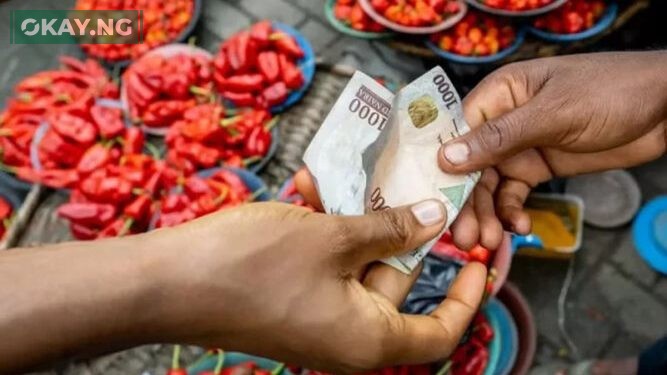Food inflation, a critical component of the overall cost of living, reached 21.79% in Nigeria in March 2025 on a year-on-year basis. This increase is severely affecting households nationwide, with some states experiencing particularly acute rises in food prices. The National Bureau of Statistics (NBS) data reveals significant disparities in food inflation across the country.
Key Inflation Figures:
While the year-on-year food inflation rate is 21.79%, the month-on-month food inflation rate in March 2025 was 2.18%, which is a 0.50% increase compared to the 1.67% recorded in February 2025. This indicates that food prices continued to rise at a faster pace in March.
Drivers of Food Inflation:
The NBS report highlights specific food items contributing to this surge:
- Ginger (fresh)
- Garri (Yellow)
- Broken Rice (Ofada)
- Honey (Natural Production)
- Crabs
- Potatoes
- Plantain Flour
- Periwinkle (Unshelled)
- Pepper (Fresh)
The rising cost of these staples and other food items is placing a significant burden on Nigerian households.
Also, the “All items less farm produces and energy” or Core inflation, which excludes the prices of volatile agricultural produces and energy stood at 24.43% in March 2025 on a year-on-year basis. On a month-on-month basis, the Core Inflation rate was 3.73% in March 2025 up by 1.21% compared to February 2025 (2.52%)
State-by-State Analysis of Food Inflation:
The impact of food inflation varies considerably across Nigeria’s 36 states and the Federal Capital Territory (FCT).
- Highest Food Inflation (Year-on-Year): In March 2025, Oyo (34.41%), Kaduna (31.14%), and Kebbi (30.85%) recorded the highest year-on-year food inflation rates. This means that residents in these states have experienced the most substantial increases in food prices over the past year.
- Lowest Food Inflation (Year-on-Year): Conversely, Bayelsa (9.61%), Adamawa (12.41%), and Akwa Ibom (12.60%) reported the slowest rise in food inflation on a year-on-year basis, offering some relative respite from escalating food costs.
- Highest Food Inflation (Month-on-Month): On a month-on-month basis, Oyo (19.74%), Kaduna (17.24%), and Kebbi (14.03%) again led the pack in March 2025, indicating a rapid acceleration in food prices within that single month.
- Decline in Food Inflation (Month-on-Month): In a notable contrast, Sokoto (-14.10%), Nasarawa (-9.91%), and Edo (-5.78%) recorded a decline in food inflation on a month-on-month basis. This suggests that food prices in these states decreased somewhat in March, a deviation from the prevailing upward trend in most other states.
Regional Implications:
These state-level disparities in food inflation can have significant regional implications, affecting everything from household food security to local economies. States with high food inflation may see increased poverty rates and social unrest, while those with lower inflation may experience less economic strain.
Food inflation is a critical concern in Nigeria, with substantial variations across states. Addressing the root causes of these price increases, such as agricultural challenges, supply chain bottlenecks, and economic policies, is essential to mitigate the impact on Nigerian households and ensure food security.













